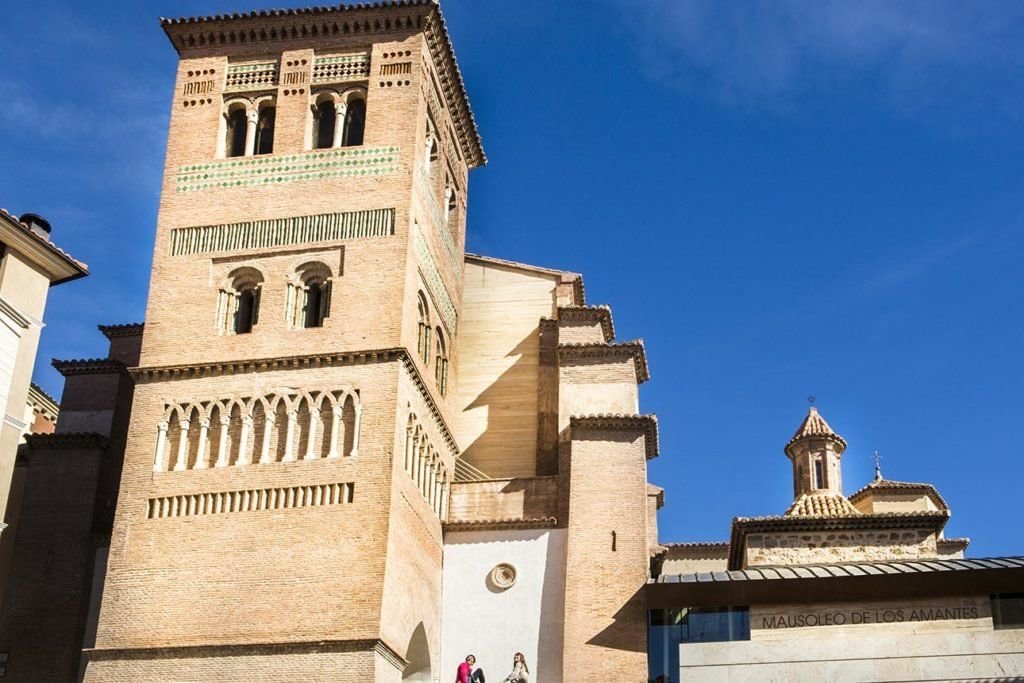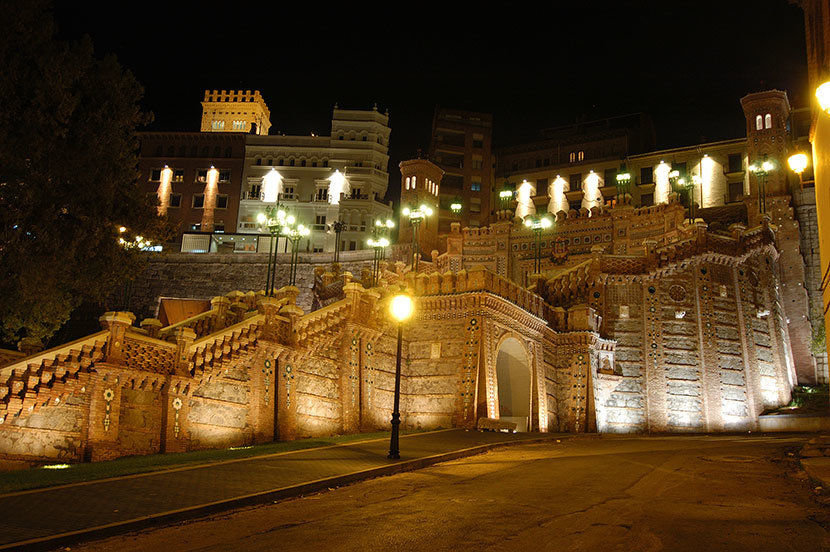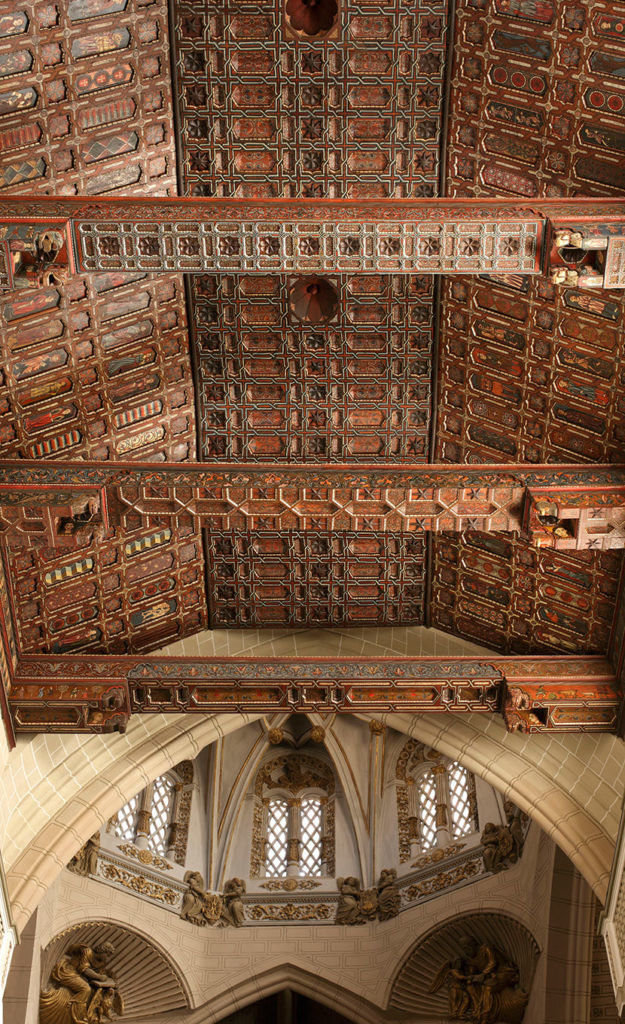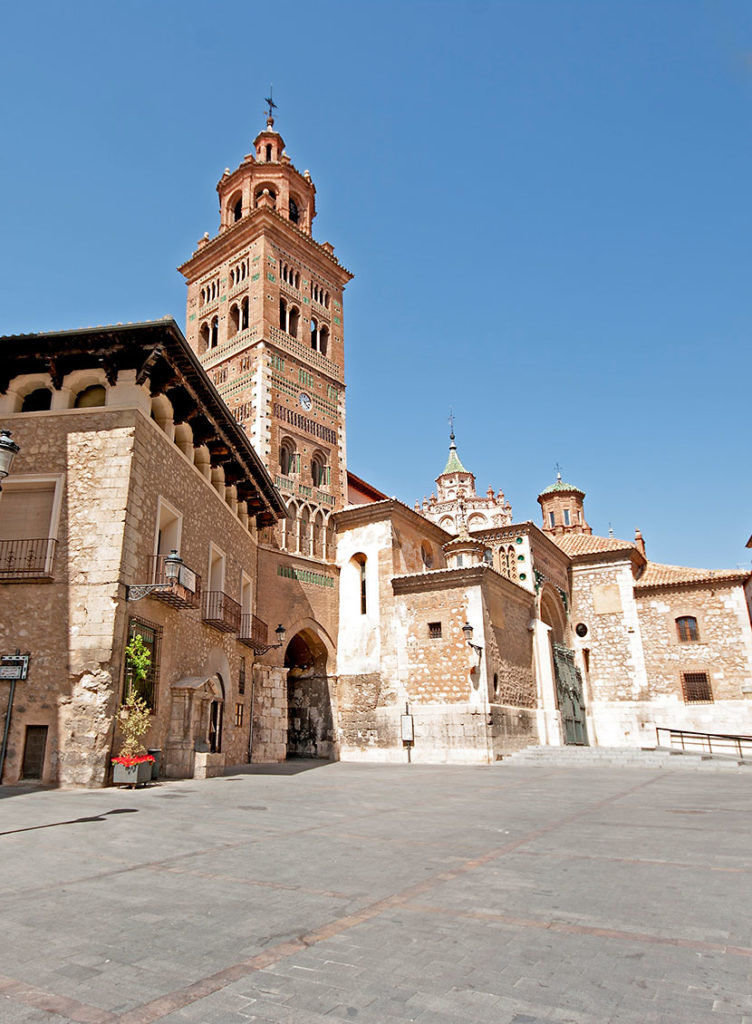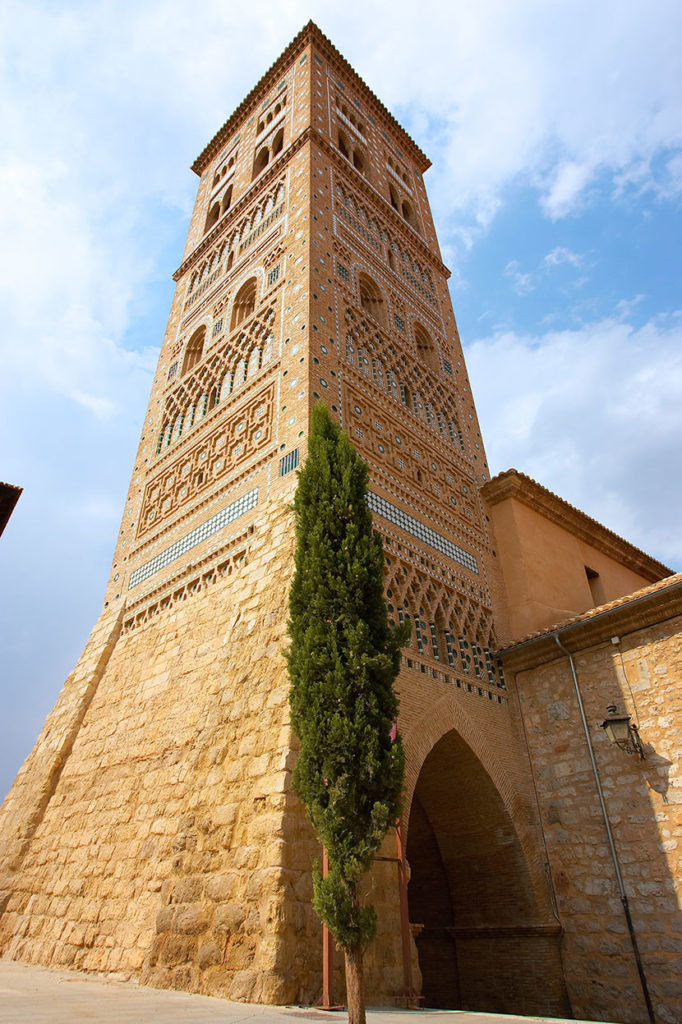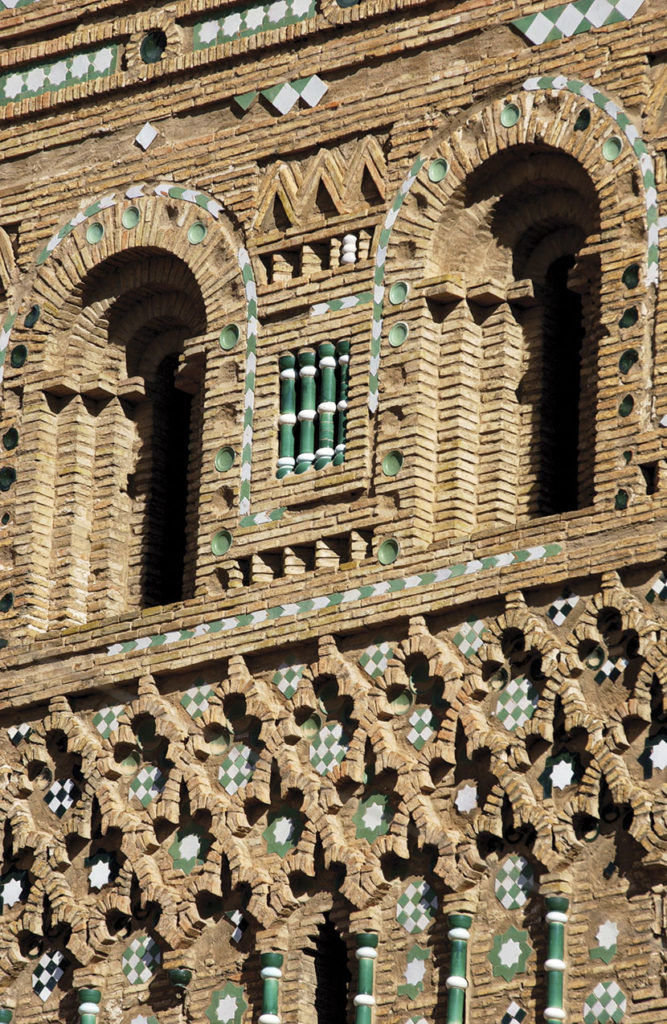This website uses cookies so that we can provide you with the best user experience possible. Cookie information is stored in your browser and performs functions such as recognising you when you return to our website and helping our team to understand which sections of the website you find most interesting and useful.
Teruel
Teruel astonishes us with its natural charm and artistic wealth. In this beautiful city, its Mudejar monuments were declared Sites of World Heritage in 1986. And in 2001 this declaration was extended to all the Mudejar architecture of Aragon. A stroll through the urban area leads us to admire the beauty of Mudejar in all its splendour and we discover that it is also the city of love legends and the capital of dinosaurs. Those who visit Teruel will be seduced by the splendid towers of San Martín, El Salvador, the church and tower of San Pedro (where the Mausoleum of Los Amantes is located) or the cathedral, with its wonderful coffered ceiling considered by many as “The Sistine Chapel of Mudejar art”.
But not everything is medieval in Teruel. The Los Arcos Aqueduct is considered one of the most important engineering works of the Renaissance. You can also enjoy an interesting route of modernist architecture in several buildings of the old town. The highlight of the visit will be the beautiful Neomudéjar Staircase on the Paseo del Óvalo. And to the outskirts is Dinópolis, the largest paleontological park in Europe that offers fun activities for all ages.
